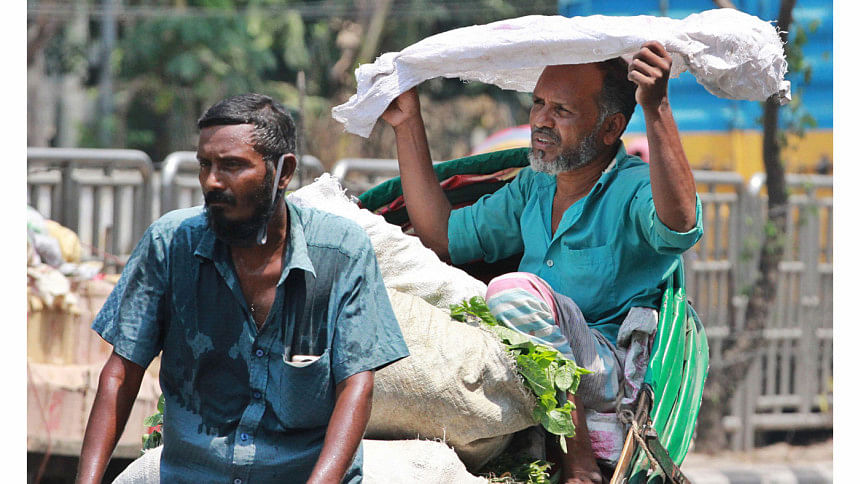Extreme heat: $6b loss a year in Dhaka’s labour productivity

Dhaka is losing $6 billion worth of labour productivity each year due to heat stress from extreme temperatures, said a study published yesterday.
This amounts up to 8 percent of the annual labour output in Dhaka, said the study published by the Adrienne Arsht-Rockefeller Foundation Resilience Center, a joint initiative of The Rockefeller Foundation and philanthropist Adrienne Arsht.
The study compared 12 cities across the globe and found that in Dhaka heat impairs labour productivity more than any other city.
The other cities studied include New Delhi, Athens, Buenos Aires, Freetown, London, Los Angeles, Miami, Monterrey, Santiago and Sydney.
The study titled "Hot Cities, Chilled Economies: Impacts of Extreme Heat on Global Cities" said unless measures were taken to reduce global warming, the loss will rise to 10 percent by 2050.
This is the highest share of losses of any city in this study, it added. "While others such as Abu Dhabi and Bangkok are more exposed to heat stress, Dhaka is unusually vulnerable to its effects, due to its labour-intensive economy and low rate of active cooling," said the report.
"Despite the already high temperatures and humidity of between 60 and 80 percent in Dhaka, climate change is set to make things substantially worse."
Because of the unchecked warming, sectors such as manufacturing loses $1.5 billion while logistics loses $1.8 billion yearly.
The report states that in Dhaka, for the 10 hottest days of a typical year, the apparent temperature (considering both heat and humidity) is hotter than the human body.
In 2020, Dhaka experienced 36.5 days in which the 24-hour average temperature was more than 28.8 degree Celsius. By 2050, this could rise to 69.8 days.
The surface of roads can currently reach up to 60 degree Celsius, found the report.
"Large and widespread hotspots within the city are more than 10 degree Celsius higher than the surrounding countryside."
The heat impacts the poor disproportionately, said the report.
"The highest worker productivity-related economic losses from the heat are felt by those least able to bear them. In sectors such as garment manufacturing, transport, and retail trade, where wages can be lower than average, losses already amount to around 10 percent of income."
Losses in manufacturing are likely to be particularly high in sectors such as garment manufacturing or brick making, where proximity to machinery or ovens increases the temperature to which workers are exposed, said the report.
It said that heat is concentrated in some of the city's poorest areas.
"In Kamrangirchar, an area containing a high concentration of informal settlements with widespread use of corrugated iron sheet roofing, temperatures are typically 12 degree Celsius higher than Dhaka's surroundings."
Such temperatures lead to health risks, it added.
"The world is burning. Unfortunately, that's not an exaggeration. Climate-driven heat is changing the way we live and work," commented the report.
Ashraf Dewan, a professor at School of Earth and Planetary Sciences, Curtin University, Australia, had earlier studied urban heat islands and how the temperature of Dhaka has risen over the decades.
"Urban heat islands are places whose temperature is hotter than the surrounding areas. In Dhaka, temperature is sporadically felt differently in different places," said Dewan.
"The poorest areas are hotter because of lack of greenery and the use of corrugated iron sheets. These trap heat during the day, and do not radiate heat fast enough at night. Since these areas are surrounded by high-rise buildings that do not facilitate wind flow, the air gets trapped," he explained.
"Water bodies used to cool down the city. But we don't have water bodies anymore. In addition, the reliance on air conditioners lead to heat being dispensed into the surrounding air.
"Furthermore, glass buildings aggravate urban heat islands – they let in heat and light during the day but they need more air conditioners for cooling."
Professor Dewan said that the easiest and cost-effective solution is to plant more trees – they do not let the air temperature rise.

 For all latest news, follow The Daily Star's Google News channel.
For all latest news, follow The Daily Star's Google News channel. 



Comments